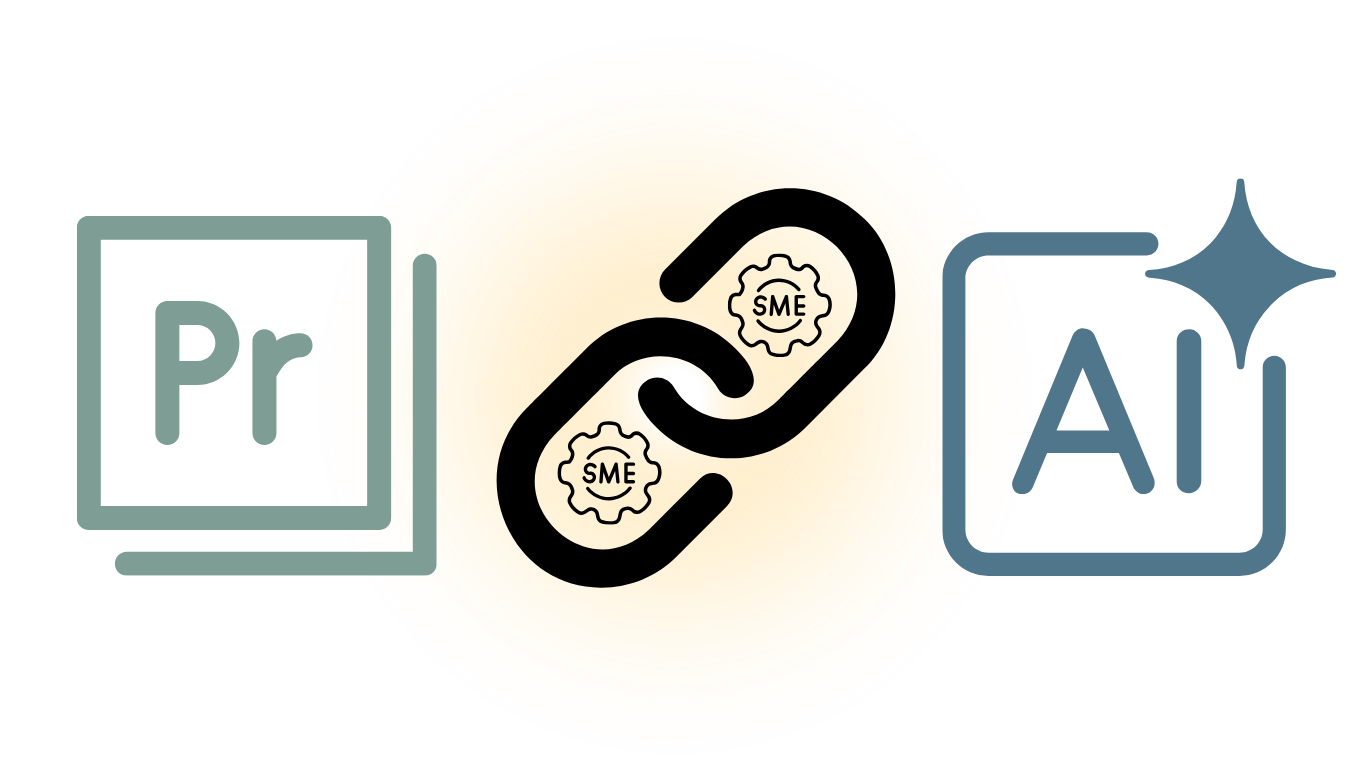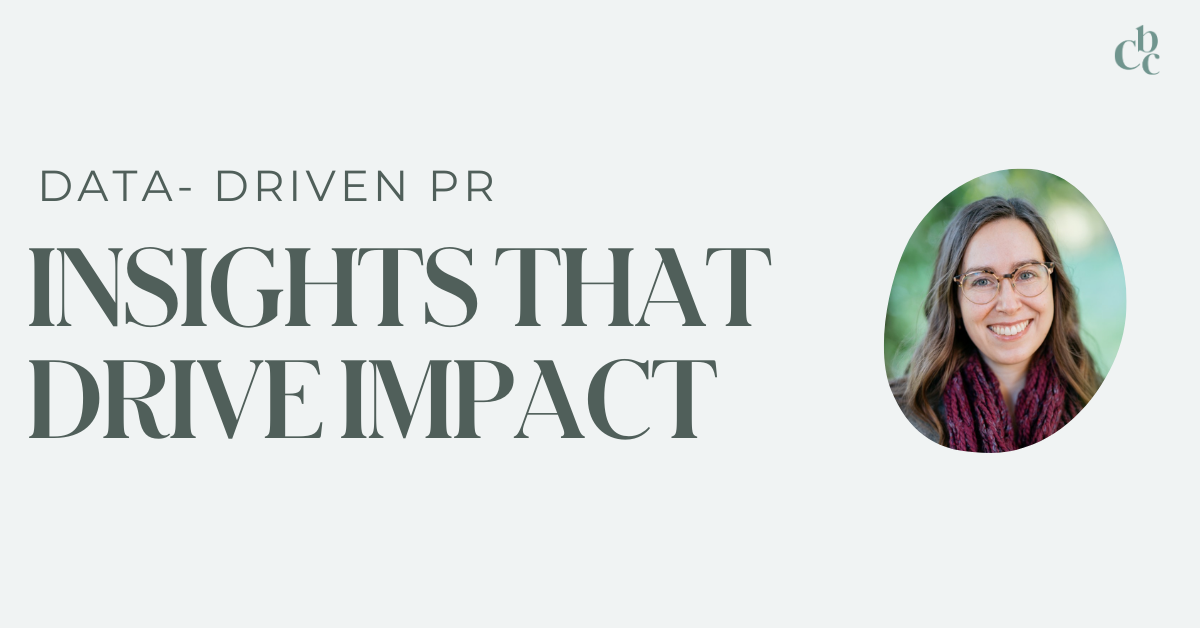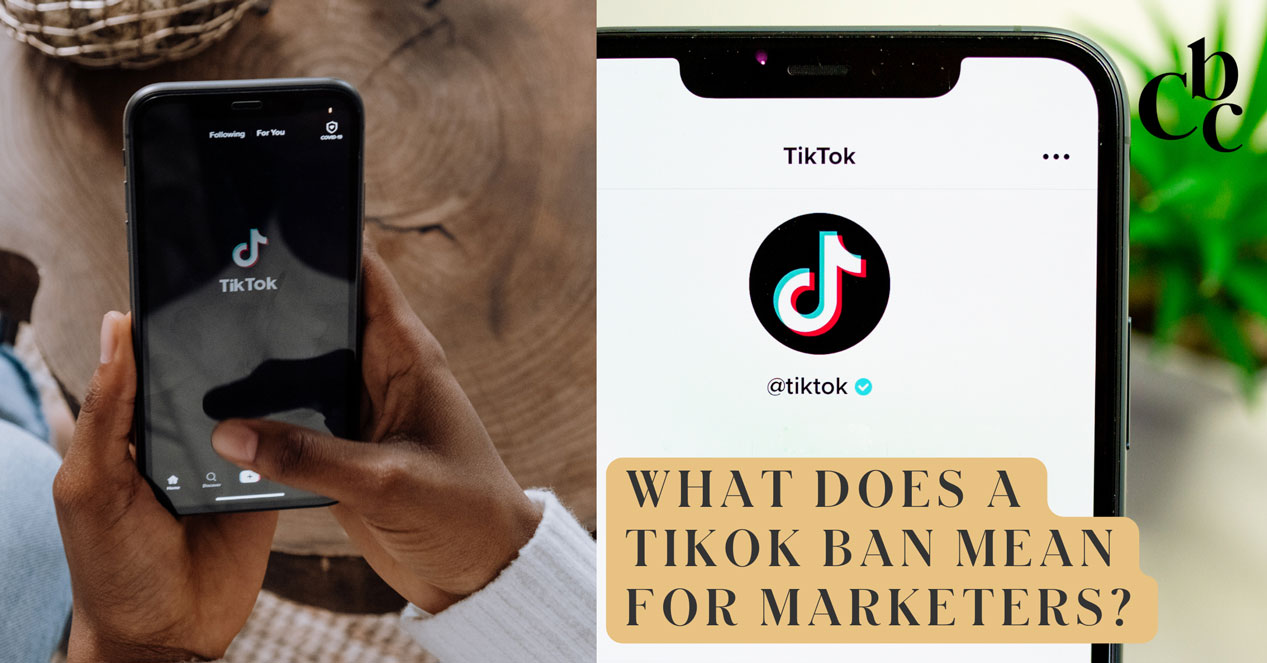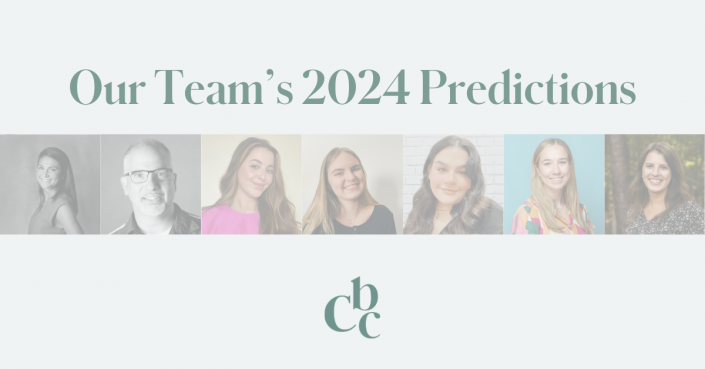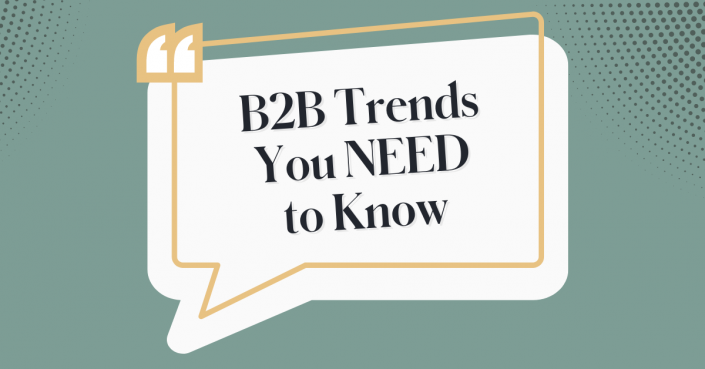At CBC, we deliver more than just coverage; we drive measurable business results through our strategic, data-driven approach to public relations (PR). Our Research & Insights team recently conducted original research on correlations between earned media coverage with website KPIs like traffic & conversions. The goal? Quantify the ripple effect of a PR campaign’s success to our clients’ bottom line using proven PR measurement techniques.
How to Measure PR Value
According to Muck Rack’s State of PR 2022 survey, nearly half of PR pros agree that producing measurable results is a key way to increase the value of PR in an organization. At CBC, we track measurable results and long-term benefits of PR through four main techniques. Through implementation of these PR measurement techniques, we’ve found that PR adds a long-lasting value to other marketing initiatives, and we’ve cracked the code on how to measure it.
PR Measurement Techniques
The four main areas for added value are:
- Spike Detection – When a publication includes a backlink to your site, we can directly measure the impact of coverage by the volume of traffic referred to your site. We also track users who come in through organic search or direct traffic after seeing coverage.
- Organic Search Lift – PR raises brand awareness, making users more likely to type your brand name into Google. We look for spikes in organic traffic, as well as the lasting organic search power that comes from authoritative backlinks.
- Engagement/Content Consumption Increase – Users who come in from PR efforts generally consume more content and stay on a website for a longer period of time.
- Revenue – Exceptional PR has a direct impact on revenue. It can be measured through sales partner links, affiliate links, retail sales, or by tracking leads through a CRM.
Spike Detection: Correlating PR Hits with Website Wins
Spike detection is a proven PR measurement technique for tracking user traffic following a PR hit. If you’re lucky enough to get a backlink in your coverage, we can measure direct clickthrough from the article to your site.
Otherwise, we know that PR drives both organic search and direct traffic. Sometimes the reader isn’t ready to take action when they first read coverage, but if they remember your brand name, they will look you up later. More often than not, they turn to Google search or directly type your website URL into their browser to find more info on you. When users actively seek you out, you know your PR coverage was memorable!
Spike detection is a simple but effective way to prove that PR works. Across CBC clients, 70% of all top traffic days correspond with PR coverage.
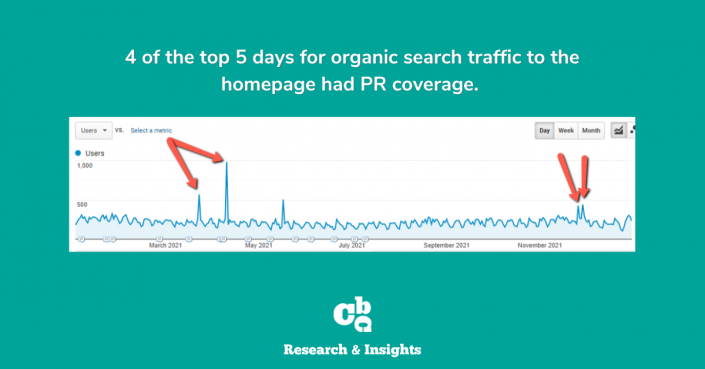

If your PR team can secure hits in the right publications, reach the right audience, and with the right message, you too can expect to see an increase in web traffic.
Organic Search Lift: Long-Lasting Impact from Earned Media
In some cases, coverage is significant enough to provide lasting organic search power. As PR earns authoritative links that point to your site, your domain authority increases. Domain authority measures the overall quality of your site, and backlinks from trustworthy sites are one of the biggest ranking factors. A higher authority score means search engines view your site as a trustworthy resource and are more likely to rank your website higher in search results, which ultimately translates to increased organic search traffic.
In the case of one CBC client, organic search increased by a factor of 4 when comparing pre- and post- coverage. In April 2020, CBC secured authoritative coverage for a clean skincare brand. The pieces included coverage revolving around hand sanitizer, a highly in-demand product, and was featured in major publications like Allure, NY Mag, and Buzzfeed. The links in these articles generated significant traffic and link equity. As a result of this, organic search increased from an average of 50-100 clicks a day to 200-400 clicks a day. We estimate that the lasting impact of the links drove over $80K in organic revenue.
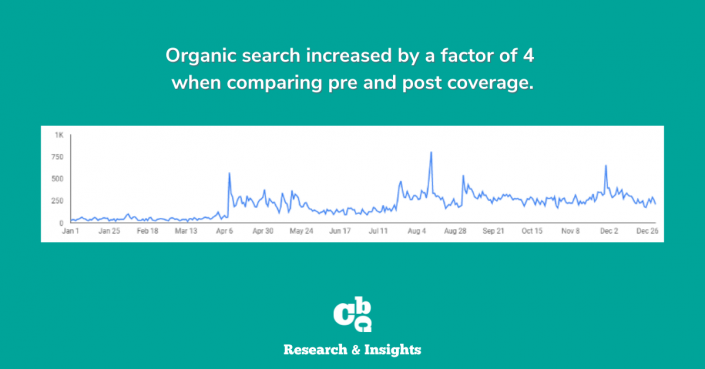
Engagement and Content Consumption from PR Users
We have seen that users who come in from PR efforts are generally more engaged users. They consume more content and stay on the websites for a longer period of time. In most cases, they are nearly 100% new users, showing that PR is effective at reaching new audiences who don’t already know about your brand.
Across CBC’s PR clients, we’ve seen that PR-referred users view 15-25% more content and stay on the site 25-50% longer than the standard website user. Not only does PR bring a higher volume of traffic to the site, but it also brings high-quality audiences.
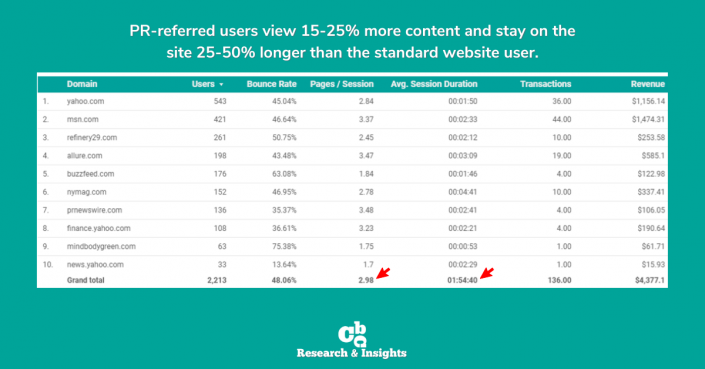
The example above shows traffic from users who were referred to a clean beauty brand’s website from earned media coverage. These users viewed 16% more pages per session than the standard website user. CBC sent almost 2,000 users to the website via referral sources.
Show Me the Money: Attributing Revenue with PR Measurement
Marketing is a team sport. At CBC, we believe that PR is, generally, most effective at the top of the funnel, but we can also measure the lower funnel impact of users who were first exposed through PR efforts. Ultimately, it’s about conversion: either sending the user down to the next step in the user journey or generating direct conversions, such as a purchase or scheduling a demo.
In the B2B space, we have tracked leads directly from coverage to lead generation forms. We can also track sales by monitoring activities within a CRM. For example, one of our B2B clients was able to connect the dots from a user who came to their site via a press release, filled out a lead capture form, and ultimately signed on for a $70K project. The lifetime value of that single lead will likely even be higher, as the team builds a strong customer relationship and foundation for future projects.
Our B2B PR team has also secured earned coverage for a pharma marketing and medical affairs agency in key industry publications like FiercePharma. From data in their CRM, we have been able to directly attribute new business inquiries to the FiercePharma piece, with leads requesting demos of the service featured in the article. This shows that the coverage was in the right target publication and brought in qualified marketing leads that were ready to be handed off to the sales team.
On the consumer side, we know that coverage generates traffic to e-commerce sites, which in turn creates revenue. We track PR-attributable revenue in the same way that we track coverage, using methods like spike detection and measurement of organic search lift. Not all consumer brands are DTC, so we also leverage affiliate links and affiliate content to drive revenue through multiple sources, including Amazon, Target, Walgreens, etc.
The Bottom Line: PR Works & We Can Prove It
Securing fantastic coverage has always been a priority at CBC for our clients, and we don’t stop at traditional PR metrics to measure our success. We’ve proven that PR can truly provide business value that your CFO can’t argue with.
We also know that coverage is just one piece of the puzzle – building relationships with media is another crucial element of a successful PR program. At CBC’s award-winning experiential House programs, we connect brands with top-tier media through immersive brand activations. PR pros from all over the country come to us for this invaluable opportunity to build relationships.
Reach out to CBC for a PR audit! If our clients’ success stories piqued your interest, let us dig into your PR data and assess the value you’re getting from your current PR program. We believe in the power of PR, so if you’re not yet seeing the business results you need, our expert media relations team can help.

